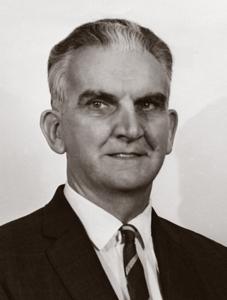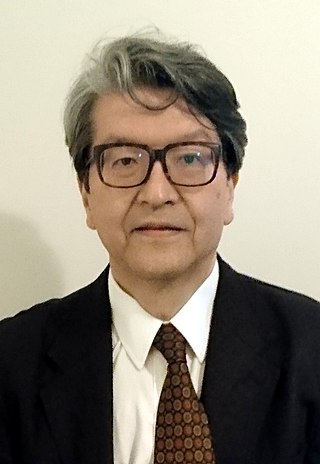Related Research Articles
Neoclassical economics is an approach to economics in which the production, consumption, and valuation (pricing) of goods and services are observed as driven by the supply and demand model. According to this line of thought, the value of a good or service is determined through a hypothetical maximization of utility by income-constrained individuals and of profits by firms facing production costs and employing available information and factors of production. This approach has often been justified by appealing to rational choice theory.
Evolutionary economics is a school of economic thought that is inspired by evolutionary biology. Although not defined by a strict set of principles and uniting various approaches, it treats economic development as a process rather than an equilibrium and emphasizes change, innovation, complex interdependencies, self-evolving systems, and limited rationality as the drivers of economic evolution. The support for the evolutionary approach to economics in recent decades seems to have initially emerged as a criticism of the mainstream neoclassical economics, but by the beginning of the 21st century it had become part of the economic mainstream itself.

Nicholas Kaldor, Baron Kaldor, born Káldor Miklós, was a Hungarian economist. He developed the "compensation" criteria called Kaldor–Hicks efficiency for welfare comparisons (1939), derived the cobweb model, and argued for certain regularities observable in economic growth, which are called Kaldor's growth laws. Kaldor worked alongside Gunnar Myrdal to develop the key concept Circular Cumulative Causation, a multicausal approach where the core variables and their linkages are delineated.
In economics, effective demand (ED) in a market is the demand for a product or service which occurs when purchasers are constrained in a different market. It contrasts with notional demand, which is the demand that occurs when purchasers are not constrained in any other market. In the aggregated market for goods in general, demand, notional or effective, is referred to as aggregate demand. The concept of effective supply parallels the concept of effective demand. The concept of effective demand or supply becomes relevant when markets do not continuously maintain equilibrium prices.

Karl Gunnar Myrdal was a Swedish economist and sociologist.
Kenneth E. Boulding's evolutionary perspective is an approach to economics put forward most completely in his Ecodynamics (1978) and Evolutionary Economics (1981) had roots in his 1934 work on population theory and the age structure of capital as well as his Reconstruction (1950) with chapter titles like "An Ecological Introduction" and "The Theory of the Economic Organism."

Johan Gustaf Knut Wicksell was a Swedish economist of the Stockholm school. His economic contributions would influence both the Keynesian and Austrian schools of economic thought. He was married to the noted feminist Anna Bugge.

The circular flow of income or circular flow is a model of the economy in which the major exchanges are represented as flows of money, goods and services, etc. between economic agents. The flows of money and goods exchanged in a closed circuit correspond in value, but run in the opposite direction. The circular flow analysis is the basis of national accounts and hence of macroeconomics.
Monetary disequilibrium theory is a product of the monetarist school and is mainly represented in the works of Leland Yeager and Austrian macroeconomics. The basic concepts of monetary equilibrium and disequilibrium were, however, defined in terms of an individual's demand for cash balance by Mises (1912) in his Theory of Money and Credit.

Heterodox economics is any economic thought or theory that contrasts with orthodox schools of economic thought, or that may be beyond neoclassical economics. These include institutional, evolutionary, feminist, social, post-Keynesian, ecological, Austrian, humanistic, complexity, Marxian, socialist, anarchist and modern monetary theory economics.

Kenneth Ewart Boulding was an English-born American economist, educator, peace activist, and interdisciplinary philosopher. Boulding was the author of two citation classics: The Image: Knowledge in Life and Society (1956) and Conflict and Defense: A General Theory (1962). He was co-founder of general systems theory and founder of numerous ongoing intellectual projects in economics and social science. He was married to sociologist Elise M. Boulding.

Foundations of Economic Analysis is a book by Paul A. Samuelson published in 1947 by Harvard University Press. It is based on Samuelson's 1941 doctoral dissertation at Harvard University. The book sought to demonstrate a common mathematical structure underlying multiple branches of economics from two basic principles: maximizing behavior of agents and stability of equilibrium as to economic systems. Among other contributions, it advanced the theory of index numbers and generalized welfare economics. It is especially known for definitively stating and formalizing qualitative and quantitative versions of the "comparative statics" method for calculating how a change in any parameter affects an economic system. One of its key insights about comparative statics, called the correspondence principle, states that stability of equilibrium implies testable predictions about how the equilibrium changes when parameters are changed.

Katsuhito Iwai is a Japanese economist and critic. He has studied the theory of money, macro dynamics, evolutionary economics, philosophy of corporations, fiduciary law, and the history of sociology. His work includes the book, Disequilibrium Dynamics, and many articles published in academic journals. He has also written books and articles in newspapers and magazines for the general public on a wide variety of subjects ranging from global capitalism, post-modernity, civil society, money and language to literature and movies. His keen observations and analysis of the works of Shakespeare, Marx, J. S. G. Boggs, and Ihara Saikaku have established him as one of the foremost essayists in Japan.
Karl William Kapp was a German-American economist and professor of economics at the City University of New York and later the University of Basel. Kapp's main contribution was the development of a theory of social costs that captures urgent socio-ecological problems and proposes preventative policies based on the precautionary principle. His theory is in the tradition of various heterodox economic paradigms, such as ecological economics, Marxian economics, social economics, and institutional economics. As such, Kapp's theory of social costs was an ongoing debate with neoclassical economics and the rise of neoliberalism. He was an opponent of the compartmentalization of knowledge and championed, instead, the integration and humanization of the social sciences.
Universal Darwinism, also known as generalized Darwinism, universal selection theory, or Darwinian metaphysics, is a variety of approaches that extend the theory of Darwinism beyond its original domain of biological evolution on Earth. Universal Darwinism aims to formulate a generalized version of the mechanisms of variation, selection and heredity proposed by Charles Darwin, so that they can apply to explain evolution in a wide variety of other domains, including psychology, linguistics, economics, culture, medicine, computer science, and physics.

Macroeconomic theory has its origins in the study of business cycles and monetary theory. In general, early theorists believed monetary factors could not affect real factors such as real output. John Maynard Keynes attacked some of these "classical" theories and produced a general theory that described the whole economy in terms of aggregates rather than individual, microeconomic parts. Attempting to explain unemployment and recessions, he noticed the tendency for people and businesses to hoard cash and avoid investment during a recession. He argued that this invalidated the assumptions of classical economists who thought that markets always clear, leaving no surplus of goods and no willing labor left idle.
The following outline is provided as an overview of and topical guide to social science:
Disequilibrium macroeconomics is a tradition of research centered on the role of disequilibrium in economics. This approach is also known as non-Walrasian theory, equilibrium with rationing, the non-market clearing approach, and non-tâtonnement theory. Early work in the area was done by Don Patinkin, Robert W. Clower, and Axel Leijonhufvud. Their work was formalized into general disequilibrium models, which were very influential in the 1970s. American economists had mostly abandoned these models by the late 1970s, but French economists continued work in the tradition and developed fixprice models.
Circular cumulative causation is a theory developed by Swedish economist Gunnar Myrdal who applied it systematically for the first time in 1944. It is a multi-causal approach where the core variables and their linkages are delineated. The idea behind it is that a change in one form of an institution will lead to successive changes in other institutions. These changes are circular in that they continue in a cycle, many times in a negative way, in which there is no end, and cumulative in that they persist in each round. The change does not occur all at once as that would lead to chaos, rather the changes occur gradually.
The term kaleidics denotes the ever-changing shape and status of an economy. Uncertainty is the primary kaleidic factor. It is strongly associated with the work of George Shackle, who had a rather radical interpretation of Keynesian economic theory. He surmised that the uncertainty in a capitalist economy was due to the irrational nature of investment, which is often driven by irrational fears, rumors, and superstition, rather than what is traditionally assumed to be cold, hard, calculation. Such theories lead to the view, expressed in Viennese kaleidics, that the turbulence of markets cannot be smoothed through government interference, and must therefore be left to their own devices.
References
- ↑ Schrödinger, Erwin (1944). What Is Life?. Cambridge University Press.
- ↑ Chen, Jing (2016). The Unity of Science and Economics: A New Foundation of Economic Theory. Springer.
- ↑ Berger, S. (2009). "The Foundations of Non-Equilibrium Economics: The Principle of Circular Cumulative Causation". Routledge.